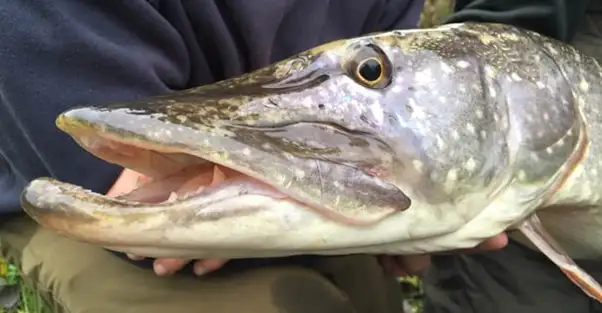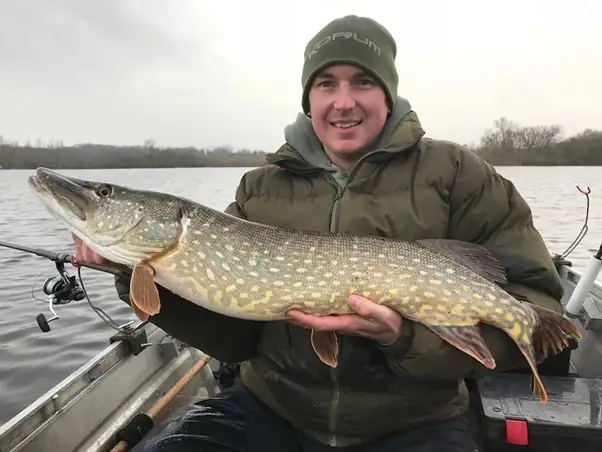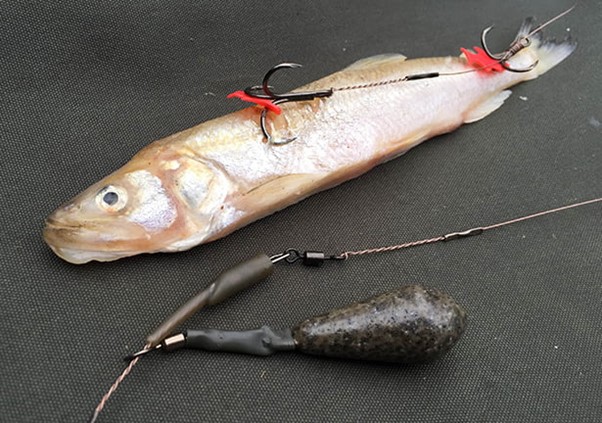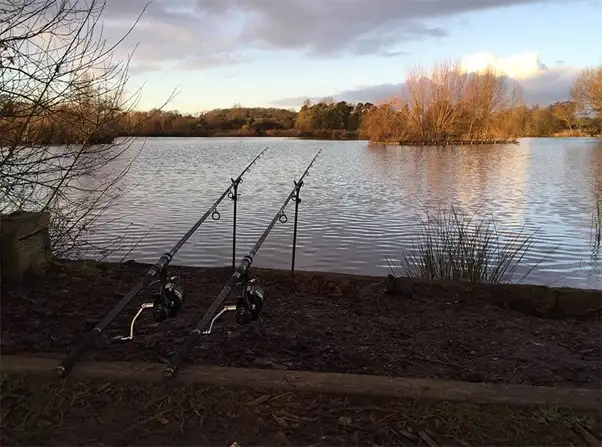This is a demo store. No orders will be fulfilled.
Your Guide to Pike Fishing - Top 10 Pike Fishing Tips

With the water temperatures dropping and frost on the ground, winter is the perfect time to get fishing for pike! In fact, pike are a species synonymous with wintertime. Targeting these predators can sometimes be a little tricky, so here are a few tips to help you hopefully have some success when targeting these fearsome freshwater predators.
10 Steps To Catching More Pike Fish
1. Lookout for Typical Prey Spots
When you’re fishing for species like roach or carp you create a swim with feed to draw them in and hold them. It isn’t the same with pike, instead, you have to put the effort into finding where they’re most likely to be, and as a predator, that’s going to be near their food source – prey fish.
Where the prey fish are located depends on the time of the year, or more importantly the temperature of the water.
Warm Water: The prey fish will be spread out, usually in the shallower areas, meaning the pike could be anywhere.
Cold Water: In autumn and winter, when the mercury drops, the roach and bream that pike eat will look for a more constant temperature in deeper water and so will shoal together in these places… and the pike will not be far away.

2. Where to Find Pike & Where to Cast your Lure
There are certain features in water that are a great bet to find pike. Look for drop-offs which are noted holding points for the predators such as pike as they can hold in the deeper water, waiting for prey fish to move in or out of the shallows before they strike.
Also, check any kind of structure as these tend to hold pike. Pike tend to look for a darkened, camouflaged corner where they can bide their time before rushing out to engulf a fish that strays within striking range.
On canals and rivers, moored boats are also worth targeting, especially those that are lived in over winter, as just a slight increase in temperature in the water under the boat will bring in the little fish, and the pike will follow.
TOP TIP: To help you find pike quicker in these spots, use lures to locate pike. Whether you are fishing a canal, river or lake, move around, having a few casts in each spot, until you manage to get a hit or follow with your lure. This will often tell where the pike are held up waiting to pounce on baitfish shoals. Then you can target this area with deadbaits or other methods, and hopefully help yourself to multiple catches.

3. Choose the Best Pike Fishing Tactic
Pike can be caught using all manner of different tactics but you should choose the one that best suits you and your fishing conditions. The main three tactics for pike fishing are; deadbait, livebait and lures.
Deadbaiting: is a static approach that works better in winter when the water’s cooler and the metabolism of a pike is slower, so they’re less likely to chase bait.
Lure Fishing: is a much more active approach, which is best suited to the warmer months and into autumn when a pike will chase bait. It’s also better at finding the fish when they are more spread out, as it’s a tactic that covers lots of water.
Livebait fishing: is kind of a halfway house between the above. It presents a live, moving prey fish, but one that’s kept within a specific area, and because of this it can be a brilliant tactic when the pike is in the mood for it.

TOP TIP: No matter whether you are deadbaiting or using lures, make sure you have a selection with you on your pike session. Some days pike will be caught on a particular bait or lure when other days the same tactic won't work. Have a few options so you can keep changing it up until something works!
4. Choosing your Pike Baits
Pike are as much scavengers as they are hunters, especially so in the winter, when they’re looking to conserve valuable energy. This is why deadbaiting can be so effective, and there is a range of baits to use, the main choice being sea and natural baits.
Natural Deadbaits: Ideal to use on waters that haven’t seen too much pressure and deads scoring where the pike have seen hooks in a lot of natural baits.
Sea Deadbaits: Such as mackerel, are also more readily available and tend to be more robust and cast better.
Just smashing out a deadbait and waiting can work; however, there are days when you need to make more effort to attract pike with your chosen bait.
TOP TIP: Be sure you recast often, not only to freshen up your deadbait but also to increase the chances of a lethargic pike seeing your enticing deadbait flutter to the bottom, prompting a take.
For a full list of deadbaits to use for pike fishing, click here.
5. Bait Edges that Attract Pike
There are a few things you can do to help you catch more pike. A great tactic which they have employed in the past is to bait an area and then fish it. Much like prebaiting for carp, but instead use a groundbait with small fish chunks, which attracts smaller fish and, in turn, pike and other predators. If done regularly in the same area this can help keep pike and prey fish in the area you have targeted, resulting in you having your own little secret spot brimming with ready to catch predators.
Prebaiting is a great way of drawing fish into an area before you fish it and also get them switched on to your bait. All you need to do is introduce a few handfuls of chopped-up fish into the area a few times a week and your chances of catching from that spot will increase. You can also try adding liquids and colours to your deadbaits as these can also give you an edge, with pike being both visual and scent-based hunter scavengers.
For more tips to give an edge to your Pike Baits, click here.
6. The Best Predator Fishing Rigs
Float or ledger rig? For pike, you should consider one of these rigs. Most of the time, a simple running ledger rig is effective, especially when using deadbaits.
Ledger Rig: Ideal for deadbaits, ledgering is often easier and more effective, or you can float ledger, which works best when you want to present your bait over deep drop-offs and create an angle in the line. See how to tie the Ledger Rig, in the video below.
Float Rigs: Floats work best for live baits, as they allow the fish to move around and increase their chance of getting seen by a predator. See how to tie the float rig in the video below.
7. What Pike Fishing Tackle to Take
In most cases, many carp fishing setups can be used and are useful for pike fishing.
Predator Fishing Rods: Fishing deadbaits requires strong rods, not because of the fish but because of the large baits and rigs you’ll be casting out. A 3lb test curve is about right for most situations.
Predator Fishing Reels: Match your strong fishing rod with a reel that will hold lots of heavy lines and one that’s preferably got a free-spool facility and you’ll have a solid setup.
Predator Fishing Line: For pike, you’re looking at a minimum of 15lb mono, or go much heavier with braid. Also, always remember to use a wire trace as pike will munch through mono, braid and fluoro if they get the chance.

8. Hitting Bites and Twitchy Takes
Pike being predators not only feed by scent but also by movement. A great tactic when deadbaiting is to twitch the bait back and then reset the indicator. This can often spur a pike that may be sat near the bait to grab it. This is very effective if your deadbait is popped up off the bottom, and you can move it as much as you want by pulling the line with your fingers until you feel that distinctive bang of a pike take.
When hitting bites, some anglers allow the fish to turn a deadbait in its mouth so that when you strike you get a good hook-hold, HOWEVER, this can be very dangerous for the fish and a problem for anglers as it inevitably ends up with deep-hooked fish.
For minimal damage to the pike, hit a bite as soon as you get an indication. Even if you do miss a fish, this is far better than trying to remove trebles that have gone past a pike’s throat.

9. Handling Pike & Fish Care
Although pike look rough and tough, pike are delicate creatures and need careful handling and respect when on the bank. Get yourself a big unhooking mat so that powerful fish can thrash around without damaging themselves on the bare bank. The best policy for pike is minimal handling, so if you can unhook them in the water, do so. If you can’t, get them back in the water as soon as you can and if they are weak when you put them back, take your time holding them upright so that they can get oxygen across their gills and recuperate before swimming off strongly.
For a better idea of how to unhook a pike, watch the video below!
10. Get the Right Fishing Tools
Unhooking sharp teeth and fingers are not a good combination out on the bank, especially if you don’t like the sight of blood. Whenever you’re pike fishing you need to take the right unhooking equipment with you. At the very least, pack a pair of forceps that you can use to remove hooks rather than putting your fingers in harm’s way. Ideally, though, you would want long and short forceps and pliers to help with difficult hookings.
Other unhooking tools and equipment to consider;
- Fishing Pliers: Those sharp teeth and treble hooks mean that pliers are a must! Mick rates fishing pliers over forceps as they’re stronger and often offer better grip.
- Bolt Croppers: These are ideal for cutting through trebles that are stuck in the fish’s mouth.
- Unhooking Mat: Pack your unhooking mat or cradle as pike need just as much careful fish care as our beloved carp. Check out the huge range of Advanta unhooking mats.
We hope these tips help you make the most of this pike season and bring a few more specimens to the bank for you. Be sure to check out more of our guides and angling tips on the AD blog. We also have plenty of informative videos over on ADTV!
For updates, follow us on social media!
Some of the tips from the post are originally from ...





